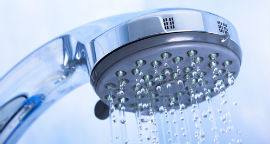With the growing list of health and safety legislation affecting rented properties, it’s no wonder that landlords and letting agents eyes glaze over when I start talking about legionella. I’m a landlord myself, and sometimes it feels like there’s a never ending list of new safety checks that have to be carried out and of course paid for from ever dwindling profits. In this article I’m hopefully going to show why legionella risk management is an important part of making sure your property is safe to be rented out to tenants.
Reason 1 – Legionnaires disease makes people ill, and kills people every year
All joking aside, legionnaires disease isn’t a pleasant thing to catch. Although the number of cases of the disease diagnosed each year aren’t huge (around 300 a year), it is believed that thousands of people are made sick by legionella bacteria, but don’t seek medical treatment. For most people the disease can be treated with antibiotics, but for some it can be fatal, particularly those with pre-existing health conditions. The 2012 outbreak of legionnaires disease in Edinburgh killed four people, hospitalised forty five and made thousands of people ill. While the source of this outbreak obviously wasn’t a domestic property, it shows how dangerous the disease can be. Apparently, most people have had the disease a couple of times in their lives. Often people return from holiday and hop into the shower to clean off after travelling, without flushing the water system in their house that’s full of warm, stagnant water packed with legionella bacteria. Lo and behold, they spend the next few days feeling full of the flu, which is most likely actually legionnaires disease.
Reason 2 – cold water tanks in rented properties are normally filthy
Does your property have a cold water tank? Here in Edinburgh, we generally find around 40% of the properties we carry out legionella risk assessments at still have cold water tanks. While we’ve not found one yet with a dead pigeon floating in the water, we’ve also yet to find one that doesn’t need cleaned. The current Scottish water regulations require cold water tanks to be made from a non-corrosive material, have a tight fitting lid and be insulated so that the water temperatures can’t rise to a point where legionella bacteria can multiply. They’re also required to have the inlet and outlet pipes on opposite sides of the tank to ensure a flow of water in the tank. As you’ll see from the photos above, most tanks need both cleaned and disinfected, and require remedial works to them to bring them up to standard. Would you want to brush your teeth with water from a tank that looks like this?
Reason 3 – It’s the law
Landlords have a legal duty to ensure that the risk of exposure of tenants to legionella is properly assessed and controlled. Your opinion on whether legionella is a legitimate concern in your property is irrelevant. You still need to carry out legionella risk management on all rented properties, just as you have to have an annual gas safety check, and soon will have to carry out a check of the electrical installation every five years.
Hopefully this article will have convinced you that legionella risk management isn’t a ridiculous, unnecessary burden for landlords created by health and safety bureaucrats with too much time on their hands, and is actually a genuine requirement to ensure that the property you rent out to your tenants is safe. If you’d like to know more or to book a legionella training session don’t hesitate to contact us, we’ll be happy to help.







